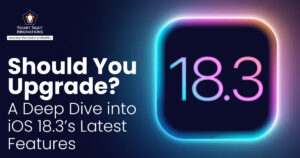 The blockchain is a decentralized and immutable ledger that has revolutionized the way transactions are recorded and verified in the digital realm. The blockchain explorer is a tool that serves as the window into the intricate web of transactions.
The blockchain is a decentralized and immutable ledger that has revolutionized the way transactions are recorded and verified in the digital realm. The blockchain explorer is a tool that serves as the window into the intricate web of transactions.
This article explains the importance of the blockchain explorer, how it works, its key components, and how to choose the right explorer.
What Is Blockchain Explorer?
A blockchain explorer is a web-based interface that allows users to explore the contents of a blockchain. Picture it as a digital magnifying glass that zooms into the details of every transaction, block, and address within the blockchain.
It acts as a transparent and real-time archive, providing a user-friendly means to track and trace various activities on the blockchain network.
A blockchain explorer is a powerful tool that demystifies the cryptic nature of blockchain transactions, making it accessible to both seasoned crypto enthusiasts and newcomers alike. It not only displays transaction histories but also showcases critical details such as transaction amounts, timestamp, and the wallet addresses involved.
Importance of Blockchain Explorer
Blockchain explorers are essential tools that allow users to search, track, and verify information stored on a blockchain. They act as search engines for the blockchain, providing a user-friendly interface to explore blocks, transactions, and wallet addresses.
1. Transparency and Accountability
Blockchain technology prides itself on transparency, and a blockchain explorer amplifies this attribute. By allowing anyone to scrutinize transactions in real-time, it fosters accountability within the decentralized network. This transparency acts as a deterrent to fraudulent activities, as users can easily verify the legitimacy of transactions.
2. Verification of Transactions
Every transaction is recorded on the blockchain, and a blockchain explorer facilitates the easy verification of these transactions. Users can input transaction details to confirm the status and authenticity of a particular transaction, enhancing trust in the decentralized system.
3. Educational Tool for Users
The blockchain explorer serves as an invaluable educational resource by offering a practical understanding of the mechanics of blockchain transactions.
4. Monitoring Network Health
Blockchain explorer plays a pivotal role in monitoring the overall health and performance of a blockchain network. By analyzing the transaction volume, block generation time, and other metrics, users can gain insights into the network’s efficiency and scalability.
5. Addressing Anonymity Concerns
While blockchain transactions are pseudonymous, the use of blockchain explorer helps users trace the flow of funds and identify wallet addresses. This feature is particularly crucial for regulatory compliance and combating illicit activities, striking a balance between privacy and accountability.
How Does a Blockchain Explorer Work?
Blockchain explorer provides a user-friendly interface to interact with the vast amount of data stored on the blockchain. Here’s a step-by-step breakdown of how a blockchain explorer works:
1. Transaction Broadcasting
When a user initiates a transaction, it gets broadcasted to the network. The transaction includes details such as the sender’s address, recipient’s address, and a digital signature for verification.
2. Transaction Verification
Nodes on the blockchain network validate the transaction using consensus algorithms. For instance, in a Proof of Work (PoW) system, miners solve complex mathematical puzzles to validate transactions. Once they are verified, the transactions are grouped with others into a block.
2. Block Formation
A block is a collection of validated transactions. It contains a header with information like a timestamp, the previous block’s hash, and a unique identifier called a nonce. The block’s integrity is ensured through cryptographic hashes.
3. Linking Blocks
Each new block is linked to the previous one through its hash, creating a continuous chain. This chaining mechanism ensures the immutability of previously recorded transactions. Altering one block would require changing the information in all subsequent blocks.
4. Blockchain Explorer Access
The blockchain explorer taps into this linked chain of blocks. Users can access it through a web-based interface, inputting transaction details, wallet addresses, or block numbers. The explorer then queries the blockchain, retrieving and displaying the relevant information.
5. Real-time Data Display
As new transactions occur and blocks are added, the blockchain explorer updates in real-time. This dynamic display allows users to monitor the latest activities on the blockchain, providing a transparent and up-to-date view of the network.
Key Components of Blockchain Explorer
1. Search Bar
This serves as your gateway, allowing you to search for specific information based on transaction IDs, addresses, or keywords. Just like typing book titles or author names, the search bar unlocks specific data within the ledger.
2. Transaction Details
Transactions are the lifeblood of a blockchain, and explorers provide a detailed breakdown of each one. Think of it like reading a book’s synopsis – you see details such as the sender and receiver addresses, time and date.
3. Block Details
Every transaction gets bundled into “blocks,” chronological segments secured by cryptography. Explorers allow you to explore individual blocks, unveiling the number of transactions within, their timestamps, and even the block hash, a unique identifier.
4. Address Explorer
Blockchain transactions involve public addresses, acting like library membership cards. Explorers let you delve into specific addresses, revealing their transaction history, balance, and even associated labels (if available).
5. Network Health
Beyond individual transactions, understanding the overall health of the blockchain is crucial. Explorers often provide network statistics like current block height, transaction volume, and even hashrate (computational power securing the network). This is akin to checking a library’s opening hours and available resources.
6. Advanced Features
Many blockchain explorers offer additional features like:
- Charting and analysis tools to visualize trends and relationships in transaction data.
- NFT explorers for those who wish to dive deeper into the world of non-fungible tokens.
- APIs that integrate blockchain data into your own applications.
How to Choose the Right Blockchain Explorer
Blockchain explorers serve as the lens through which users explore and understand the decentralized world of blockchain transactions. Some factors to consider when selecting the ideal blockchain explorer are:
1. Blockchain Compatibility
Different transactions operate on separate blockchains, each with its own set of rules and protocols. Ensure that the blockchain explorer you choose is compatible with the blockchain you intend to explore. Whether it’s Bitcoin, Ethereum, or any other blockchain, compatibility ensures accurate and meaningful data retrieval.
2. User-Friendly Interface
The user interface is the gateway to your blockchain exploration journey. An intuitive and user-friendly interface enhances the overall experience, making it easier for both beginners and experienced users to navigate through transactions, blocks, addresses, and public keys. Look for an explorer that presents information in a clear and digestible format.
3. Search and Query Capabilities
A powerful search functionality is paramount in a blockchain explorer. The ability to search for specific transactions, block details, or wallet addresses simplifies the process of extracting relevant information. Look for explorers that offer robust search and query capabilities to expedite your exploration.
4. Real-Time Data Updates
Blockchain networks are dynamic, with transactions occurring in real-time. A good blockchain explorer should provide up-to-the-minute data updates, ensuring that users have access to the latest information on transactions and block confirmations.
5. Comprehensive Transaction Details
The depth of information provided on individual transactions is a critical aspect. The explorer should furnish comprehensive details, including transaction amounts, timestamps, involved addresses, and confirmation status. This granularity allows users to scrutinize transactions thoroughly.
6. Security Features
A trustworthy blockchain explorer should prioritize the security of user data and interactions. Look for explorers that utilize secure protocols, encryption, and other measures to protect users from potential vulnerabilities.
7. Network Statistics and Metrics
For a more holistic understanding of the blockchain network, consider explorers that provide additional statistics and metrics. Information such as block generation time, transaction volume, and network health metrics can offer valuable insights into the overall performance of the blockchain.
8. Developer-Friendly Features
Developers often rely on blockchain explorers for debugging, testing, and building applications. Look for features that cater to developers, such as APIs (Application Programming Interfaces) that allow seamless integration with other tools and services.
Popular Blockchain Explorers
Some of the popular blockchain explorers are:
1. Blockchain
Blockchain is one of the most popular blockchain explorers that offers real-time data on Bitcoin, Ethereum, and Bitcoin Cash. It allows users to analyze transaction and address details, including amounts, fees, and transaction timings.
2. Blockcypher
With the help of the BlockCypher Explorer, users can explore blocks and follow the real-time movements of cryptocurrencies. Its extensive statistics and visualizations, which include heatmaps, charts, and graphs, allows users to quickly learn about blockchain technology and cryptocurrencies.
3. Tokenview
Tokenview Explorer helps users to view transaction history of a particular wallet address, monitor network activity, and analyze market trends.
4. Blockchair
Blockchair provides customers with an easy-to-use interface for browsing, searching, and visualizing blockchain data. It can perform complex searches and queries across multiple blockchains.
5. Tradeblock
The user-friendly and intuitive interface of TradeBlock Explorer makes it easy for users to swiftly navigate through the various sections of the platform. Market indicators, such as price charts, trading volume, and market capitalization, are also available to users.
6. Etherscan
Users may examine the Ethereum blockchain and its related currencies in a panoramic fashion with the help of the user-friendly interface and dynamic search features of the Etherscan Explorer. It also offers a thorough understanding of smart contracts, decentralized apps, and other important features of the Ethereum platform.
Blockchain explorers are gateways to a new era of financial transparency and trust. By understanding how they work and using their capabilities, we can navigate the crypto space with greater confidence, make informed decisions, and contribute to a more transparent and equitable financial future.













